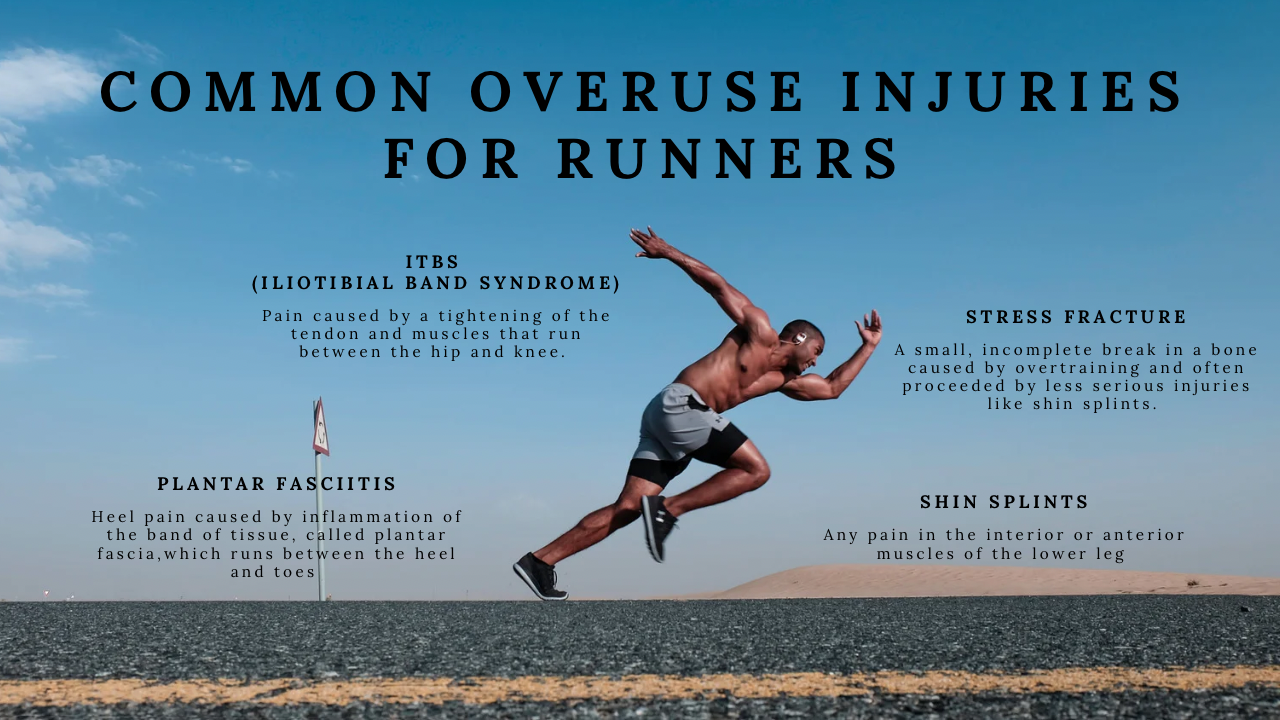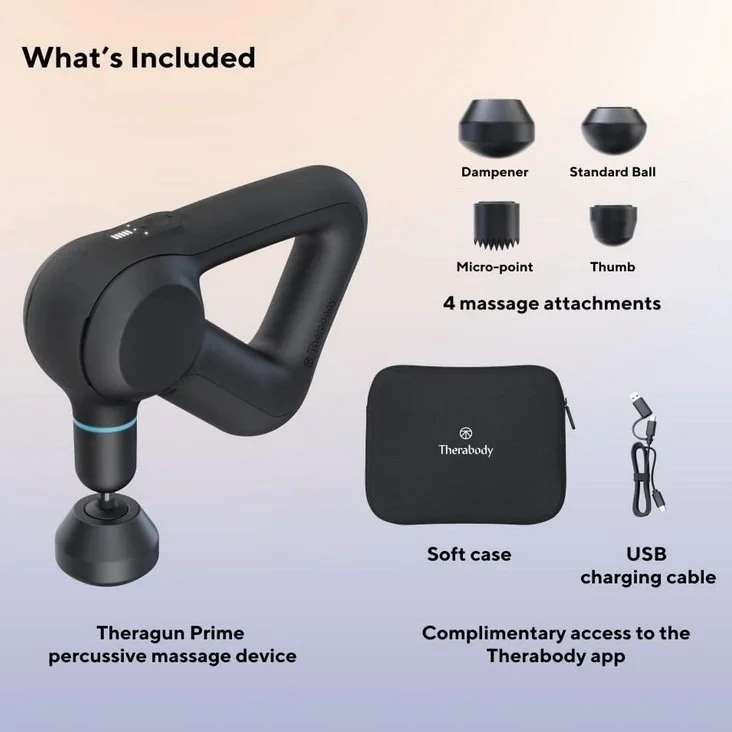Overuse Injuries at work, at home, and at play
Don’t let this common injury sideline you!
Often when we think about injuries we think about the event that caused the injury — motor vehicle accidents, slip and falls, sports-related mishaps, or accidents in the workforce. We often overlook a far more common and prevalent injury — overuse injuries. According to Erik Dalton, PhD, overuse injuries are generally described as “tissue damage resulting from repetitive demand over the course of time.” Some sources claim that overuse injuries account for almost half of all muscle, tendon, ligament and bone injuries. Others that overuse injuries account for nearly 50% of all muscle and bone injuries seen by healthcare providers.
What is an overuse injury?
The types of injuries we normally think of usually occur suddenly and we are usually aware of the traumatic event that caused it. Overuse injuries, on the other hand, happen little by little over time. These types of injuries are typically caused by repeating the same action or motion over and over. Also known as cumulative trauma disorders (CTDs), repetitive use/motion or repetitive strain injuries (RSI), these types of injuries are seen in athletic, occupational, recreational and habitual activities.
Our jobs, as well as our daily activities, can often require us to use (and overuse) certain muscles and/or certain motions to perform tasks. These exertions are performed over and over by the same muscles, following the same movements, often in the same (sometimes awkward) positions. These repetitions can result in things like tightness, pain, fatigue and inflammation in our muscles, and in the ligaments and tendons around our joints. Excessive loading, insufficient recovery, and underpreparedness can also increase injury risk.
Overuse injuries can cause pain, as well as a decrease in strength or speed. The most common symptom is pain when you perform a specific movement. If left untreated, the occasional or situational pain could turn into constant/chronic pain which occurs while doing unrelated activities, or even at rest. Other symptoms can include hypersensitivity, poor coordination, and tingling/numbness in the affected area.
What are some common overuse injuries?
Common, familiar overuse injuries include tennis elbow, runner’s knee, shin splints, plantar fasciitis, stress fractures and tendonitis. Overuse injuries typically result in pain during the repetitive or traumatic activity, as well as limits to range of motion. If the condition worsens, the pain can worsen, occurring even when at rest.
In my massage practice I see overuse injuries in clients who work physical jobs, often requiring them to perform the same motions over and over. This includes lobstering, landscaping, construction, etc…. Clients whose jobs or responsibilities put them in positions to perform tasks that often result in posture or tech-related overuse injuries like office workers and students who spend long hours bent over their computers commonly have pain in the neck, shoulders, arms and wrists. I also see clients whose roles and responsibilities put them in a position where they perform awkward lifts or carries. This can be moms who regularly carry their babes around on one hip, or healthcare workers who need to lift or move their patients. And, of course, I see athletes who are recovering, or attempting to prevent, overuse injuries related to their sport/activity of choice. Most commonly this is running, but also biking, racket sports, paddling and lifting.
Who is affected by overuse injuries?
A lot of the attention and studies done on overuse injuries has been focused in the athletic sector. At even the high school level, the physical stress of daily practices, a strenuous schedule of games and the repetitive micro trauma caused by athletic performance can directly impact the specific joints and muscles affected. Overuse injuries in recent years have become far more common in athletics. A trend currently attributed to the focus placed on year-round performance in one specific sport, according to Elmer G. Pinzon, MD, medical director of University Spine & Sports Specialists in Knoxville, Tennessee. (Later I will discuss the benefits of cross-training in preventing overuse injuries).
A baseball player might experience an overuse injury to their shoulder from throwing the ball in the same way over and over. A swimmer might experience “Swimmer’s shoulder” (rotator cuff tendonitis) from repeatedly practicing the same strokes.
But overuse injuries don’t just affect athletes. For example, many things can contribute to the condition known as runner’s knee, including overtraining, a poor walking/running gait caused by improper footwear, or even one leg that is slightly shorter than the other. Weak or tight hips can also contribute to poor anatomical alignment and cause runner’s knee. Another common overuse injury is tennis elbow. Tennis elbow doesn’t just effect tennis players. While overuse injuries of the elbow are common in other racket sports and also golf, they can also be caused by occupational activities like painting or typing on a keyboard in an office setting.
Increasingly, as technology use becomes commonplace, overuse injuries like “gamers/blackberry thumb,” and carpal tunnel syndrome are also increasing.
In the workplace, other examples of work conditions that may lead to overuse injuries include the routine lifting of heavy objects, routine overhead work, mechanical compression, vibration, temperature extremes, glare, inadequate lighting, having to perform repetitive forceful tasks, or any repetitive motion overusing a particular muscle (or group of muscles) or done in an awkward position. In the workplace, overuse injuries are associated with high costs to employers such as absenteeism, lost productivity, and increased health care, disability, and worker’s compensation costs.
How do you treat an overuse injury?
If you suspect that you have an overuse injury, consult with your healthcare provider on the best treatment options for you. Be sure to inform them if you’ve recently made changes in your workplace or personal life, in your exercise level, or in your workout techniques. Identifying the cause of your overuse injury will aid in helping you to correct the problem and avoid repeating it.
The goal of any treatment plan should be to control the pain, promote healing, prevent complications, and restore normal use of the injured area. Your doctor will likely ask that you take a break from the activity that caused your injury. Initial treatment for overuse injuries often includes R.I.C.E. (rest, ice, compression, and elevation).
Other treatment options may include:
Medication (including over-the-counter or prescription anti-inflammatory drugs)
Activity restrictions. Sometimes, the best thing to do is rest. This could look like scaling back the intensity or the duration of the activity, or avoiding it entirely.
Stretching. Stretching can help to both prevent and treat overuse injuries by relaxing tight muscles and increasing/maintaining their natural range of motion.
Hot/Cold Therapy
Steroid Injections
Medical support devices like splints, casts, crutches or wheelchairs
Physical therapy (to manage pain, identify impairments that may have led to injury and treat to reduce complications)
Massage. Massage can target the muscles and soft tissues to help prevent injury and aid in the recovery from one.
Surgery. Surgery may be required if the injury happens again, if the pain doesn’t improve, or if a muscle, tendon, or ligament is badly torn.
How can you prevent an overuse injury?
Overuse injuries are caused by repetitive trauma and commonly stem from either training errors or technique errors. Training errors can occur when you take on too much physical activity too quickly. Going too fast, exercising for too long or simply doing too much of one type of activity can strain your muscles and lead to an overuse injury. Improper technique also can also result in overuse injuries. If you use poor form as you exercise, play sports, or perform functions in the workplace, you can overload certain muscles and cause an overuse injury. Everyone knows the old adage, “Lift with your legs,” right?
Many overuse injuries can be prevented with correct conditioning and training, wearing the right protective gear, and using the right equipment.
The best ways to prevent an overuse injury include:
Proper body mechanics and posture
Ergonomics. Ergonomics is the science of fitting workplace conditions and job demands to the capability of the working population. The goal of ergonomics is to reduce stress and eliminate injuries and disorders associated with the overuse of muscles, bad posture, and repeated tasks.
Stretching. As noted above, regular stretching can help ease tense muscles and promote muscle healing.
Proper hydration
Massage. Massage can target the muscles and soft tissues to help prevent injury and aid in the recovery from one.
Cross-training. Cross-training is an important tool in preventing overuse injuries. Performing and training various movements to keep your motions varied can prevent the repetitive stress of over-using a particular muscle group or movement pattern. “Repetitive motion of any kind, over and over again without some sort of counter balance, is not good for the musculoskeletal system," says Dr. Joseph J. Ruane, DO, medical director for the McConnell Spine, Sport & Joint Center in Columbus, Ohio. "Joints needs a good balance of muscle strength around them to function properly. Tendons need push and pull to be as healthy as they can be. Doing only one thing places undue stress on limited parts of the system and ignores other parts.”
Why choose massage therapy for overuse injuries?
Massage used to be considered an indulgence, but according to Harvard Medical School, it’s now recognized as a legitimate therapy for some painful conditions. Pain and discomfort associated with overuse injuries can compromise your quality of life, mobility, function, and ability to work and make a living. Massage therapy can be a positive alternative or complementary treatment for overuse injuries and plays a significant part in many pain management approaches. Massage is:
Non-invasive.
Has minimal side effects. While anti-inflammatory drugs and painkillers can bring relief from pain symptoms, they don’t address the cause of the issue and can come with side effects.
Can reduce pain and soreness. Massage can help ease sore muscles, address pain areas, and assist in addressing underlying musculature conditions which could be contributing to your injury. Massage also releases endorphins, the feel-good chemicals that can help alleviate pain.
Decreases Injury Risk. In addition to helping you move better, regular massage can help to decrease your risk of future injuries by taking care of the muscles and joints you rely on most often. By making massage a priority, you can ensure your body gets the attention and care it needs to perform and function well.
Promotes Relaxation. Regular massage can help you to relax and reduce your stress levels. When you are relaxed and managing your stress, your body has more resources at its disposal to heal and maintain itself.
Here are some of the products I’ve come to rely on when I’m experiencing pain or soreness from overuse injuries:
Reusable Hot and Cold Ice Packs - $23.95
Best feature: Dual use (Hot OR Cold) and FSA or HSA eligible
Trigger Point Massage Tool - $34.99
Best feature: Unlike single muscle hook designs, the two hooks on the Body Back Buddy let you apply more leverage to more parts of the body. The 3 different shapes include acorns for deep tissue, round for gliding over larger muscle groups, and nubs for the lower back.
Theragun Massage Gun - $299.99
Best feature: Connects to the Therabody app for personalized wellness routines—great for step-by-step guidance and easy visualization of routines specific to things like arthritis, sciatica and plantar fasciitis relief.
Disclaimer: Maine Seastone Studios is a participant in the Amazon Services LLC Associates Program—an affiliate advertising program designed to provide a means for sites to earn advertising fees by advertising and linking to products on Amazon.com and affiliated sites. This post may include affiliate links. If you click one of them, I may receive a commission at no extra cost to you.
Please note that I have not been given any free products, services, or anything else in exchanged for mentioning products on this site. As an affiliate, I only recommend products and services that I myself have purchased, used and love.
When possible, I encourage you to purchase products from small businesses in your local community.
Sources & Additional Reading:
Aicale R, Tarantino D, Maffulli N. “Overuse injuries in sport: a comprehensive overview.” Journal of Orthopaedic Surgery and Research. 2018 Dec 5.
BP, Bernard, editor. “Musculoskeletal disorders and workplace factors: a critical review of epidemiologic evidence for work-related musculoskeletal disorders of the neck, upper extremity, and lower back.” DHHS (NIOSH) Publication No. 97-141. U.S. Department of Health and Human Services, Centers for Disease control and Prevention, National Institute of Occupational Safety and Health. July 1997.
CDC. “Work-Related Musculoskeletal Disorders & Ergonomics.” Centers for Disease Control and Prevention.
Dalton, Erik PhD. “A Surge in Overuse Injuries.” Massage & Bodywork. 2022
Harvard health Publishing. “Therapeutic massage for pain relief.” Harvard Medical School. 2016.
Mayo Clinic Staff. “Overuse injury: How to prevent training injuries.” Mayo Clinic.
Pinzon, Elmer G. MD, MPH, DABIPP. “Sports Overuse Injuries on the Rise.” Practical Pain Management. 2015.
URMC. “Overuse Injuries.” University of Rochester Medical Center
U.S. Department of Defense: Ergonomics Tech Guide 220: Booklet I, General Program Management









